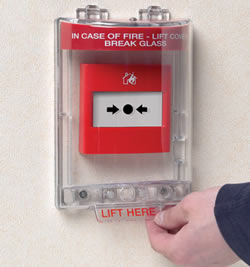
False fire alarms are not only disruptive to your business, but they can also prove costly, in terms of downtime and service charges.
In this two part series, we share the common causes of false fire alarms and offer your business some top tips to help you reduce the risk of a false alarm.
Design
The design of your fire alarm system should be fit for purpose and take account of the nature of your business and environmental conditions in which it operates for e.g. will the system be exposed to heat, cold, moisture, vibrations etc.
For example: A high heat temperature detector would be preferable than a smoke detector as a means of detection in the cooking area of a restaurant/hotel kitchen.
Top Tip:
Make it your business to get involved at the design stage as mistakes early on can prove extremely costly.
If you are moving into new premises with an existing fire alarm, consider how this change of use may affect the system? Consult your service provider if you have any concerns or questions.
New Conditions
The introduction of new conditions can lead to an increase in false alarm activations. New Conditions could include for example refurbishment or repair of office space, new machinery, increased traffic etc. It important to note that such activations may not present immediately.
Top Tip:
If repair or refurbishment works are taking place, you should protect the smoke, heat or multi sensor detectors in that area. Your service provider should be able to supply you with temporary covers free of charge to protect these devices.
We always recommend that you liaise with your provider about fitting of same to ensure detection is not compromised during such works.
Aerosols
Related to my second point, but worthy of being addressed separately is the use of aerosols. This build up of aerosol particles from air fresheners, polishes and cleaning materials can contribute greatly to false fire alarm activations.
Top Tip:
If possible minimise the use of aerosols near smoke/heat and multi sensors detectors. If they must be used, ensure aerosols are not sprayed in the direct path of a detector.
Part 2 … coming soon. Remember to check back with us regularly for up to date news, offers and tips. In the meantime, maybe you have a question or query you would like advice on? Feel free to leave us a message…we’d love to hear from you!






